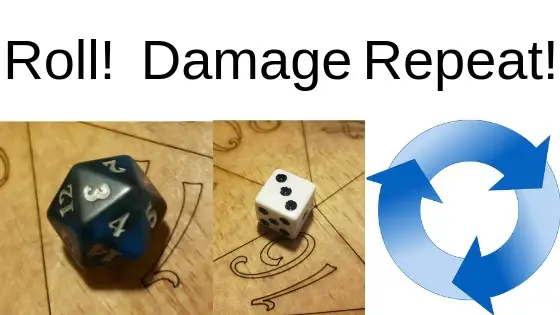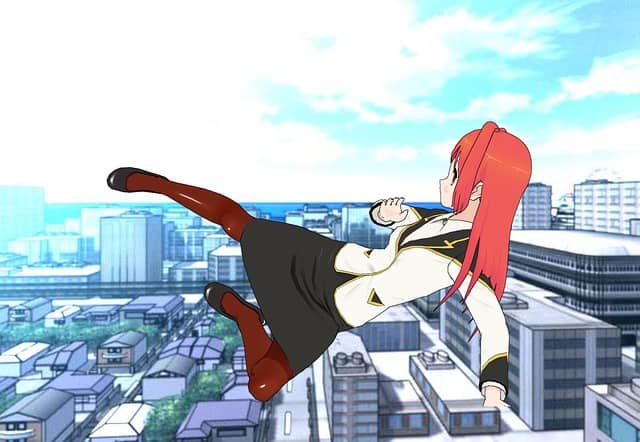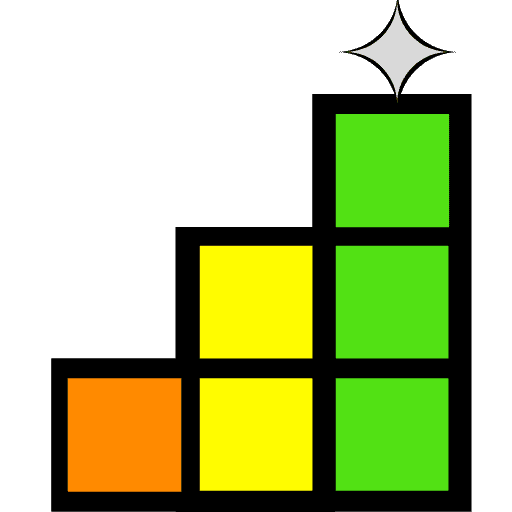Many dungeon masters want to make combat more engaging in D&D. It only makes sense if combat is ⅓rd to half of your game. Luckily for you, I have spent years being a dungeon master for high school boys. This means that I have played quite a few Diablo-style games where combat is the predominant activity. Therefore, I may be able to help you out.
When Making combat engaging in D&D you must have narrative weight, add detail, use the environment, be creative, use tactics, and more!
Normal combat

Normally, combat goes like this. “Alright roll initiative. Okay, okay, Tim you go first.” “I swing at the nearest guy. I roll a 9, do I hit?” “No. Okay, Jim you are up next.” That is extremely boring. This is of course if people can even add their numbers together and not ask the horrible question “what do I add to hit?” Or “What do I roll?” After playing that character for five levels.
Normal combat like this is not only boring, so we need to go about making combat engaging in D&D. Most people do this because the dungeon master feels obligated to use combat, or just cannot think of anything else to add.
Maybe your game isn’t quite as bad as this. Maybe your game has other issues in combat, or you just don’t know how to improve. That is why you must identify what is causing the issue.
Narrative weight
A lot of combats are completely pointless. In particular, I am looking at you random encounters. If a battle does not serve a purpose or fulfill some narrative reason then throw it out. In short, any combat that has no weight should be fixed or thrown out.
Making combat engaging in D&D needs to serve a purpose or your players will tire of unending pointless battles. This is the first step, make sure your combats have some sort of weight.
Combat can be used to convey a story and not just mindless rolling. I am a big fan of anime and quite a few anime analysts have gone over what makes a fight great in anime. One thing that everyone agrees on is that fights can and should either tell a story or be part of the narrative. I completely agree.
Identify what is boring.
Now that your fights have a purpose and are not just thrown in…. because reasons. You can take a good hard look at your fights to find out what else is missing.
Are your combats like the normal combat above? If so, I am truly sorry for you. Those fights are lacking so many things to keep the player’s attention.
Is your dungeon master passionate about the fight? Emotions are contagious, and if the dungeon master is not engaged the players are not engaged.
Perhaps instead how combat is played out is boring. Rolling, not knowing
Adding detail
Making combat engaging in D&D involves descriptors. What does it smell like? How fierce is the expression on the enemy’s face? Describe the truly horrific gore that the players are experiencing!
You can use all of these to enhance the combat experience, just make sure you do not take it too far and make your players feel uncomfortable.
Make sure that your detail is not Tolkien like. If you have read the Silmarillion, congratulations first off, but do your players want that in a fight? Most likely not. So keep your descriptors brief.
Three sentences max and that is pushing it. You also don’t need to describe every single thing but do use descriptors often to enhance the experience.
If you want to read more about detail, you can read the gauntlets take on it here. Another way you can add a lot of detail to your fights is to use the environment.
Using the environment

We all have turned a corner and either ran into or almost ran into something or someone. Why not have your monsters do the same? Have one monster run away to lure the party around a corner and get a few spears cushioning their bodies.
Simple tactics,
Separate the party with a wall of force, making the wizard and cleric fight off a giant minotaur while the fighter and ranger must deal with a dastardly sorcerer.
But why not just use the environment? This goblin can make a jump from one second floor area to another, but the warrior in plate cannot. Is this a fight in a bar? Have the ranged enemies flip a table to gain some cover. Have the bugbear tackle the fighter into a bar stool, splintering it and staking the warrior with a leg from the stool.
Get creative and find ways to make the environment a weapon. Once you do, the players will use the environment. Now your fights should get really engaging!
Give your monsters voices
Are your monsters just annoying stat blocks that the players have to overcome? That is truly a missed opportunity. Making combat more engaging in D&D involves giving your monsters their own voice.
Recently, my party fought a pale-skinned enemy dwarf. This dwarf only spoke in his deep tongue that the party could not understand, pretending that he could not speak common. He did this so that he would not be tortured. What do you think the party did?
Half the party attacked this dwarf, and the other half wanted to leave the dwarf alone. Now it was 2v1 instead of 4v1. The party cleric could possibly have fallen, and everything would be more engaging. Not only that, the party now had to come to a decision on how they would handle things in the future.
You see, the dwarf did not attack the players first, he just had his weapons ready and looked baffled. This was a very memorable combat experience that led to the party making even more engaging decisions later on.
What I am trying to get at with this example is: make your monsters have personality. Cowardly goblins? Have one run and alert the others. Why would it just stand there and die? Make your world alive, and players will feel the need to constantly adjust in combat making encounters more engaging experiences.
Encourage players
If Jimmy is unsure that kicking over a table is a good idea, make it half of his movement or a bonus action. I know that this should probably be a main action, but let Jimmy get away with a little. This will encourage him to use the environment.
Sarah sees that a person is near some drapes. She casts a flame spell and misses the target. Make the drapes go up in flame and possibly scare the creature or make the creature move giving an ally an attack of opportunity.
Eventually, players will start coming up with crazy things. Let’s say Sarah tells Bilbo the bard to wrap the orc with the cloth via magic. Bilbo does this and Sarah lights the cloth on fire. The orc is now probably dead, or almost dead with some teamwork.
Making combat in D&D engaging is best done by inspiring your players.
Be generous when trying to get your players to think, use the environment, and make the game engaging. After all, doesn’t that help you make an even more fun game?
Monster tactics

Your players are starting to get a little smart now. Basic ‘follow me to the ambush’ is not working anymore and your players are destroying everything.
You need to work on making combat engaging in D&D again. Now you need to use tactics.
If your monsters are a militant group like orcs, use false retreats with a horn or have goblin rogues sneak up from behind while the party is engaged.
Make your forces fight in a much better position and if your players are not using area of effect magic have the orcs group up into a formation. Give extra bonuses to this formation, but only do this if after a few encounters when the orcs would know what the players have due to survivors.
Do you have a spell caster? Good, the party doesn’t know you have a spellcaster. After a few engagements, have the spellcaster strategically use their spells. The cleric is in the back just in case? Sleep or command the cleric to flee. After that, use obscuring mist to make the party not know the healer has run away.
Make your monsters think and use the environment or knowledge that they should be using. The game will become far more engaging, I can promise you that!
Player tactics
Players will create their own tactics once they see this. Players may even come up with their own tactics after they start using the environment, but everything has a weakness. If your players are using intelligent tactics, let it work the first few times on an organization without a problem. After this, the gloves are off.
Make sure your monsters run away. This makes the end of the battle even tenser, and the players always have to be ready to stop enemies. If they don’t, their group tactics and skills will be told. Once told, others can counter them and make your players have to adjust on the spot.
Some tactics may include having the rogue scout ahead with the party 30ft behind him or her. Another might be to tighten up when surrounded which is a great position for area of effect spells. Perhaps the players want to spread out, and if so have a few guys occupy the other players while a hord gangs up on one.
Make it an arms race where you players have to constantly think and stay on their toes. If the players don’t want their secrets leaked, then they have to stay on their toes and kill any stragglers. It is a
Monster creativity
Remember how I mentioned that bugbear impaling a fighter onto the leg of a bar stool? Well, what if I told you that monsters can do far more than that? Make the room slippery with black water that covers the floor. Players fight and then boom! All are on fire from the oil. Now close the doors.
If you have noticed, a lot of these examples are traps of some sort. Using traps is great and easy fun, but what if you want to take it to the next level? The party is fighting a giant scorpion in a bar (don’t ask why or how) and the scorpion doesn’t attack with its tail.
Instead, the tail whips across some chairs and a table flinging projectiles at everyone. Next round, the scorpion is hurt so it sticks it’s tail into a table and starts using it as a shield. The scorpions AC goes from 16 to 19.
This is when things start to get crazy, but when I talk about anime fights your mind will be blown.
Player creativity

Players will start to get creative as well. After seeing the scorpion use the table, later on, Sarah will learn telekinesis. She will remember this trick and move a stone slab in front of her and the enemy archers. She will have the stone slab move on her turn just a little bit so that she can fire at the archers, and move the stone slab back.
Bilbo the bard starts using T
What happened to those boring fights before? Your implementations of all these tips have changed your players and your fights. Now you need to stay on top of what to do. Expect the unexpected, because your game is about to get a lot more engaging!
Not straight forward fights
In the
Perhaps the gates start to open and swarms of enemies keep pouring out. The players now don’t want to kill everything but instead must find a way to stop the enemies from flooding in or get out of there!
Players are fighting a great wyrm at level three. They cannot win through sheer combat, so make the dragon use them for a task because it is too big or too lazy. The players must still charm or convince the dragon, but since it wants what the players want the dc is low.
A gnoll assassin shoots the players with a poison dart and runs away. The poison will kill that party member in three days. The fight is now a chase more than anything, and if the gnoll doesn’t have the antidote the players are fighting against time.
A giant 14 ft man is slaying humans in front of the party with black armor on and a flaming mace. The party should say ‘nope!’ and walk away, but the perceptive ranger sees something off. A mace cleaving a man in two or cutting things, and the wizard investigates. This is but an illusion and the enemy is just like the wizard of O
You get the point, make your fights more complex than just hitting things.
Combat is too slow
Is combat being slowed down by players not knowing what to do? Tell them who is up next, and who is up after that. Give the players a chart. I write down my player’s initiative on a dry erase board and keep it facing them. This way the players know who is up next and what to do.
A player is taking too long.
This has to be a consistent thing for it to be an issue, and if you are still encountering these issues when your player knows they are up next, you need to talk to them. Talk to them after the game one on one, and make your concerns known. Figure out a solution, and you won’t have to resort to a timer.
A timer is the last option and one that I don’t think should ever be necessary. A timer is when you give the players 30 seconds or so on their turn to say what they are going to do and take their turn, or they do not get a turn.
If you are doing everything above in this article, this should never happen. If it still does and only one player has an issue, that player might be a problem player and at that point, you may have to talk to them and figure out how to fix things or kick them.
Anime fights

As I mentioned before, I like anime. When players get high enough, your fights in Dungeons and Dragons should become anime. At least, that is my opinion and really helps you in making combatengaging in D&D.
I have had a level 16 group fight a fallen god who was trying to become a god again through absorbing the essence of another dead god. The siphons were charging him up from normal, to a yellow aura around him, to red, and then to blue. Some of you might know what this fight might be referencing, and yes we had a dragon ball fight.
Another enemy I wanted to use on the players was a machine. It was constructed by a bard so the music would change every time the players dealt enough damage. When enough damage was dealt, the machine would drop damage extra parts of its form and change its abilities.
The creature was meant to go from tank, (soaking up damage) to a hybrid, and then to an extremely fast and dextrous creature with sword hands and laser beams that shot from its eyes. All while playing you say run in the background.
Your low level, medium level, or even higher level fights do not have to be anime fights, but I highly encourage you to go wild and make them at least be this epic.
Conclusion
Players generally are bored or view combat as a punishment at worse. We as dungeon masters do not want that. Instead, we need to make our combats mean something and be an extremely engaging affair. If we incorporate the environment, tactics, and experiment a little combat can not only be more engaging but also make the world more alive.
If your players become combat junkies and turn into murder hobos, I have a dead potato that can help you here. Lastly, I have some extra spice that you can add once you have mastered this style of combat.
Lastly, if you want to support the blog you can get stuff for it! We offer The Cube as a custom add on to your game and our affiliates. At Dice Envy they offer well made and cool looking dice and Dungeon Vault helps to help give you extra tools to make your campaign even better! I prefer to use my dice from Dice Evy since they are actually balanced and love to use the tools from Dungeon Vault.
This has been Wizo and keep rolling!




